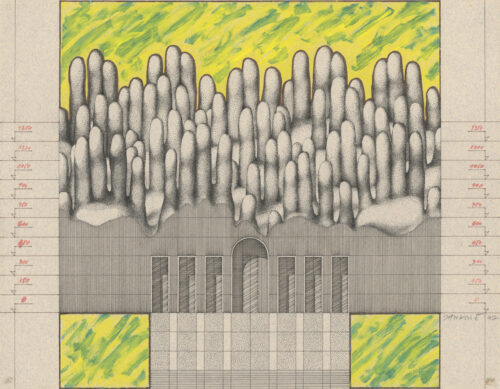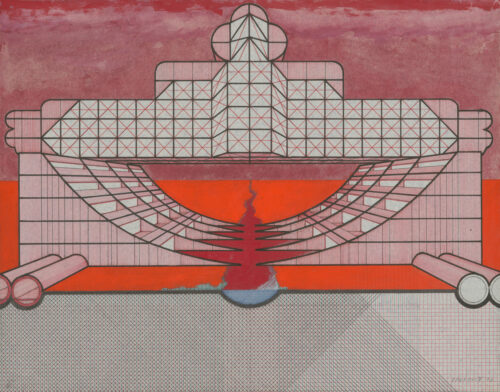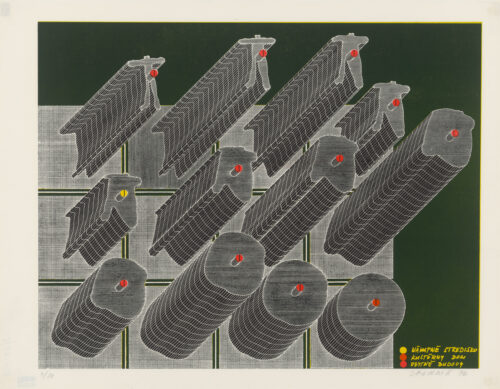Jozef Jankovič’s ‘Architectures’, 1976–78
Jozef Jankovič (1937–2017) was one of the most promising Slovak sculptors. After his graduation from Bratislava’s Academy of Fine Arts in 1962, Jankovič proceeded to create a number of monumental public works. His distorted human figures, seemingly deformed by social constraints and political oppression, also attracted international attention. He nonetheless became increasingly marginalized during Czechoslovakia’s ‘normalization’ period. Unable to secure exhibition opportunities or official commissions for large-scale works, Jankovič shifted his focus to drawing and graphic art.
In a series entitled ‘Architectures’, he created drawings of fictional, at times anthropomorphic buildings that offered a satirical critique of the megalomania of modernism, and of totalitarian policies that tried to exert control over the universe through architecture, as exemplified by his ‚Project for the Party Hotel on the Moon‘. His drawings also commented on the architectural experiments of the time. His ‚Project of a Parliament with an Inflatable Roof‘ and ‚Portable Pneumatic Agitprop Centre‘ both addressed the then popular concept of inflatable architecture, which allowed buildings to be particularly flexible. His novel, often humorous and even absurd ideas for transforming architecture, which he called ‘human architecture’, ultimately reinterpreted the very idea of architecture from the perspective of the human being who is so often neglected by modern mass construction projects.


